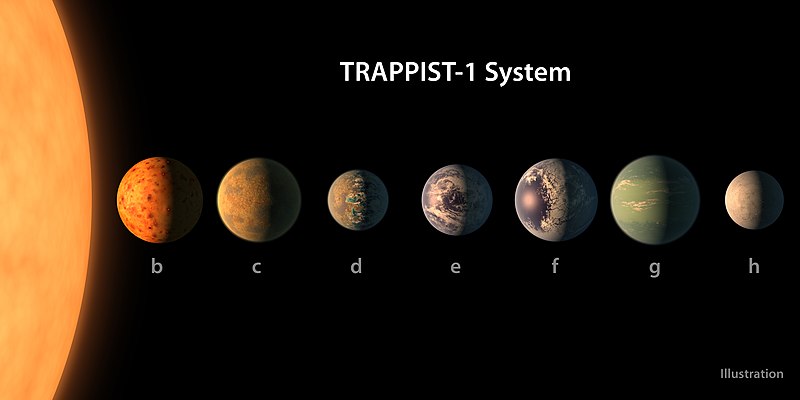Dosya:PIA21422 - TRAPPIST-1 Planet Lineup, Figure 1.jpg

Bu önizlemenin boyutu: 800 × 400 piksel. Diğer çözünürlükler: 320 × 160 piksel | 640 × 320 piksel | 1.024 × 512 piksel | 1.280 × 640 piksel | 2.560 × 1.280 piksel | 6.000 × 3.000 piksel.
Tam çözünürlük ((6.000 × 3.000 piksel, dosya boyutu: 2,63 MB, MIME tipi: image/jpeg))
Dosya geçmişi
Dosyanın herhangi bir zamandaki hâli için ilgili tarih/saat kısmına tıklayın.
| Tarih/Saat | Küçük resim | Boyutlar | Kullanıcı | Yorum | |
|---|---|---|---|---|---|
| güncel | 18.39, 22 Şubat 2017 |  | 6.000 × 3.000 (2,63 MB) | PhilipTerryGraham | User created page with UploadWizard |
Dosya kullanımı
Bu görüntü dosyasına bağlantısı olan sayfalar:
Küresel dosya kullanımı
Aşağıdaki diğer vikiler bu dosyayı kullanır:
- af.wikipedia.org üzerinde kullanımı
- ar.wikipedia.org üzerinde kullanımı
- bn.wikipedia.org üzerinde kullanımı
- ca.wikipedia.org üzerinde kullanımı
- el.wikipedia.org üzerinde kullanımı
- en.wikipedia.org üzerinde kullanımı
- es.wikipedia.org üzerinde kullanımı
- et.wikipedia.org üzerinde kullanımı
- fi.wikipedia.org üzerinde kullanımı
- fi.wikibooks.org üzerinde kullanımı
- glk.wikipedia.org üzerinde kullanımı
- id.wikipedia.org üzerinde kullanımı
- ja.wikipedia.org üzerinde kullanımı
- ku.wikipedia.org üzerinde kullanımı
- lt.wikipedia.org üzerinde kullanımı
- ms.wikipedia.org üzerinde kullanımı
- my.wikipedia.org üzerinde kullanımı
- nl.wikipedia.org üzerinde kullanımı
- pnb.wikipedia.org üzerinde kullanımı
- pt.wikipedia.org üzerinde kullanımı
- ro.wikipedia.org üzerinde kullanımı
- tl.wikipedia.org üzerinde kullanımı
- uk.wikipedia.org üzerinde kullanımı
- ur.wikipedia.org üzerinde kullanımı
- vi.wikipedia.org üzerinde kullanımı




